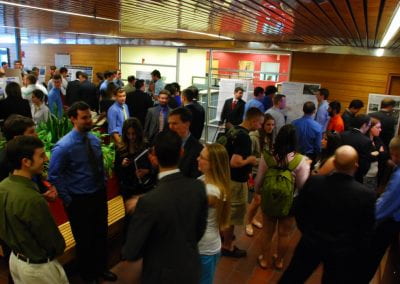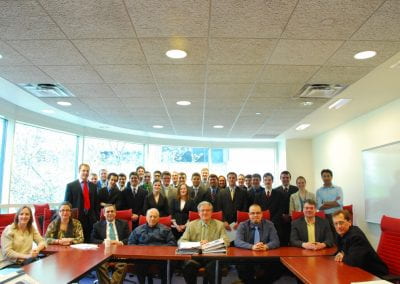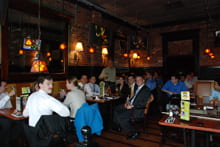Teaching
CIVE 4767
Capstone Class – 2010
NSF Grant Number 0855374
The Learning Bridge
“Bridge Anatomy”
Educational Module
Course Description
As part of a collaborative research project with Drexel University, the project team at Northeastern University embarked on a mission in advancing engineering education through the development of an interactive education module. The goal was to improve the educational paradigm aimed at preparing civil engineers who are not only knowledgeable of the fundamentals but also have developed the ability to synthesize knowledge from different disciples to devise creative solutions to real problems. The project utilized the engineering design information and health monitoring instrumentation on the Tacony-Palmyra Bridge (Philadelphia, PA) which is still fully operational today. Thus the project name was born, The Learning Bridge.
This research created a unique and much needed infrastructure resource for civil engineering laboratory development and also advanced the understanding of how civil engineers learn about multi-domain systems. The use of this real-life bridge in teaching the senior capstone design course led to a better understanding of Project-Based Learning (PBL) and findings revealed that positive feedback from students was as a direct result of material presented in an interactive format; operating on a graphic and pictorial pedestal to allow for visual connections to key civil engineering concepts. More importantly, being able to virtually dissect a real-life subject (such as a bridge) and be able to understand how each of the individual components work (on top of the component’s role as an integral part of the overall system) was fundamental in gaining a concrete understanding of the subject.
A “Bridge Anatomy” interactive educational module was therefore developed, utilizing the Tacony-Palmyra Bridge for the “Anatomy of a Bridge” section, where users are able to link the concepts presented to the real-life Learning Bridge such that it turns theory into reality. The structure of the module is geared toward multiple learning environments at allows its users to move at their own pace. Two main paths were developed: Bridge Information and Bridge Engineering.
- In the Bridge Information path, you are introduced to general background information about the bridge; including items such as the location, bridge type, dimensions, operation, clearances, a photographic history, ecological impacts, and resources.
- The Bridge Engineering path is where you can take the bridge apart into both horizontal and vertical sections so to explore the individual bridge components, learning about each one along the way. This path also allows you, the user, to learn about the design, maintenance, repair, and operation of the bridge utilizing actual engineering drawings.
This research project created numerous opportunities for undergraduate students to learn, in general, about the field of bridge engineering and in particular about superstructure and substructure components, data acquisition systems, impacts on the surrounding environment, and the Tacony-Palmyra Learning Bridge. With the release of the module, the opportunity for an array of students, from high school to graduate level, to learn from and interact with a virtual living laboratory is possible.
This “Collaborative Research: The Learning Bridge” project was supported by NSF under award No. 0855374. The support of NSF, especially the Program Officer Mr. Alan Cheville (EEC Division of Engineering Education and Centers), is greatly appreciated.
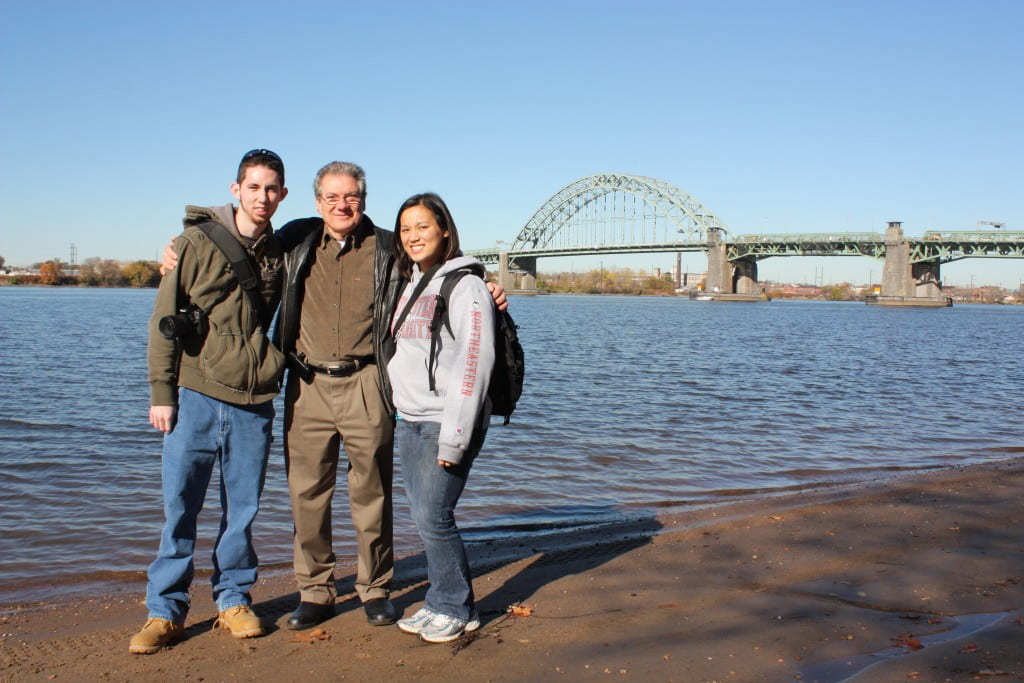
PI: Professor Mishac Yegian, College of Engineering, Distinguished Professor
Undergraduate Students: Keith Hall and Kristin Salomon
CIV U769
Capstone Class – 2004
Course Description
Students work in teams to design a civil engineering project that involves one or more sub-disciplines (environmental, geotechnical, structural, and transportation engineering). Design teams work with a faculty member and various engineering practitioners.
The Project: The Replacement of the Woodrow Wilson Bridge, Washington, D.C.
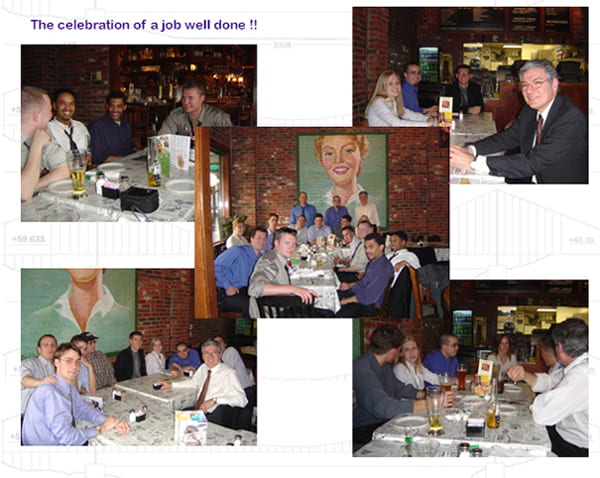
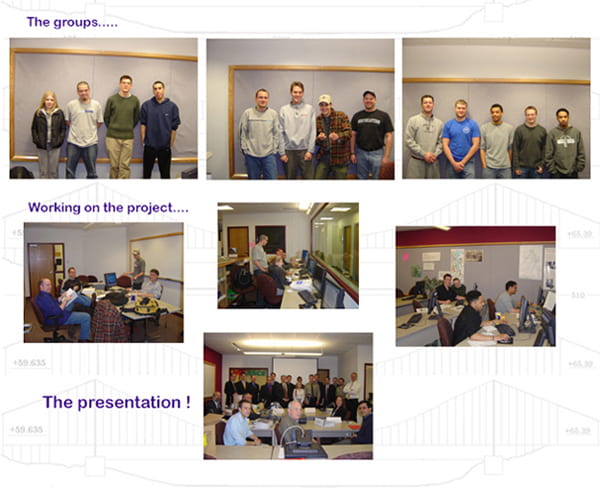
CIVE 7301
Advanced Soil Mechanics
Course Description
COURSE TOPICS:
- GEOLOGIC ORIGIN OF SOIL DEPOSITS
- INTRODUCTION TO GEOTECHNICAL ENGINEERING
- SOIL CLASSIFICATION AND MINERAL COMPOSITION
- STRESSES IN SOILS
- FLOW THROUGH POROUS MEDIA (1-DIMENSIONAL FLOW)
- TWO-DIMENSIONAL FLOW
- COMPRESSIBILITY AND SETTLEMENT
- TIME RATE OF CONSOLIDTION AND SETTLMENT
- SHEAR STRENGTH OF SOILS
- STABILITY OF SLOPES
CIVE 7302
Advanced Foundation Engineering
Course Description
COURSE TOPICS:
- INTRODUCTION TO FOUNDATION ENGINEERING
- REVIEW OF SOIL MECHANICS
- SUBSURFACE EXPLORATION
- SHALLOW FOUNDATIONS: Ultimate Bearing Capacity
- SETTLEMENT OF SHALLOW FOUNDATIONS
- BEARING CAPACITY OF MAT FOUNDATIONS
- DEEP FOUNDATIONS
- SOIL-PILE INTERACTION ANALYSIS
- LATERAL EARTH PRESSURES
- RETAINING WALLS
CIVE 7311
Soil and Foundation Dynamics
Course Description
COURSE TOPICS:
- DYNAMIC LOADS
- VIBRATION MEASUREMENT
- BLAST VIBRATIONS AND CONTROL
- TOLERABLE VIBRATIONS
- VIBRATION ATTENUATION
- FOUNDATION DYNAMICS (1-Degree-Of-Freedom System)
- FOUNDATION DYNAMICS (Multi-Degree-Of-Freedom System)
- GUIDELINES FOR MACHINE FOUNDATION DESIGN AND ANALYSIS
- SOIL-STRUCTURE INTERACTION (SSI)
- WAVE PROPAGATION
- DYNAMIC SOIL PROPERTIES
CIVE 7312
Earthquake Engineering
Course Description
COURSE TOPICS:
- INTRODUCTION TO EARTHQUAKE ENGINEERING AND COURSE OBJECTIVE
- PLATE TECTONICS, SEISMOLOGY, AND INSTRUMENTATION
- EARTQUAKE FAULTS AND MAGNITUDE SCALES
- GROUND MOTION PARAMETERS
- DYNAMIC RESPONSE ANALYSIS OF SINGLE-DEGREE-OF-FREEDOM SYSTEM AND RESPONSE SPECTRUM
- GROUND MOTION ATTENUATION
- INTRODUCTION TO SITE EFFECT
- WAVE PROPAGATION AND DYNAMIC SOIL PROPERTIES
- SITE RESPONSE ANALYSIS USING PROSHAKE
- SEISMIC HAZARD AND RISK ANALYSIS
- DESIGN GROUND MOTIONS AND SPECTRA
- SEISMIC DESIGN OF BUILDINGS
- SEISMIC ANALYSIS OF BRIDGES: OVERVIEW

